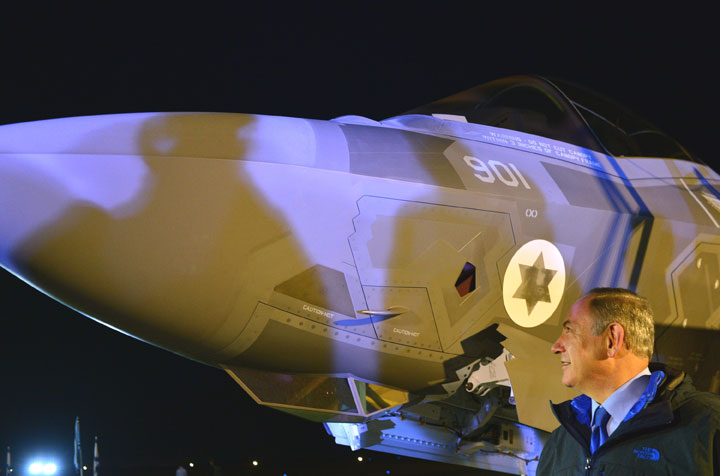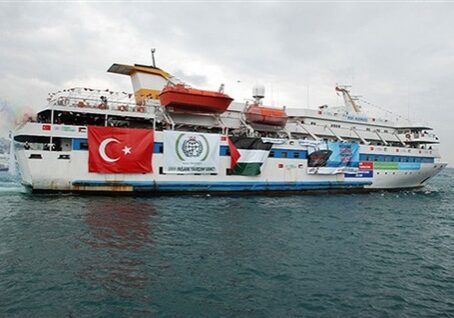Australia/Israel Review
“Adir” in the Sky
Jan 9, 2017 | Yiftah Shapir

Yiftah Shapir
On December 12, 2016, the first two F-35A jet fighters (dubbed “Adir,” a word meaning “mighty” or “awesome” in Hebrew) landed in Israel. This is a major milestone in the long process of accepting the aircraft into Israel Air Force service, a process that began in 2008, when Israel first applied for the planes. Two batches have been ordered, totalling 33 planes, and in late November 2016, Israel’s security cabinet authorised another request; this will bring the total number of Israel’s F-35 aircraft to 50. Israel will pay US$5.57 billion for the 33 planes, and this money will come from the security assistance it receives from the US. The sum covers the planes as well as spare parts and simulators.
Reaching full operational capabilities of advanced aircraft is a long process, and even after the arrival of the entire first batch of planes, it will be necessary to install Israeli-made systems on them and train the squadron (whose training already started last year). Indeed, the F-35 will not be fully operational before 2019.
Much has been said about the F-35’s special capabilities and the technological leap it will give the IAF. The plane’s impressive technological innovations include:
• Its low radar cross-section, usually referred to as “stealth.” Apparently this is not its most important feature.
• Its special radar type, i.e., Active Electronically Scanned Array (AESA). It can track and follow a large number of targets – both ground and aerial, in high resolution, while resilient in face of electronic counter measures (ECM).
• It has an array of sensors in the visible light and infra-red wavelengths. These sensors cover the full 360 degree space around the plane.
• Data fusion – all the information gathered by the aircraft’s sensors, as well as information transmitted from other sources in the air and on the ground, is processed into a unified picture that gives the pilot unequalled situational awareness.
• An important part of this system is the pilot’s helmet. On the visor the pilot sees data that is received from all the different sources, as well as the flight data and the relevant threats and targets. As such, the pilot does not need to lower his gaze toward the instrument panel. The aircraft’s data fusion capability meshes the data into a full picture of the whole space surrounding the plane, including the current image of the ground.
• The F-35 is accompanied by a sophisticated logistics system installed partly on the planes and partly on ground stations. It monitors the plane’s systems’ health continually, can detect faults, and can send alerts, sometimes before these lapses can be detected otherwise. It issues repair instructions and even orders spare parts as necessary.
• One of the three models of the F-35 – the F-35B – is capable of short take off and vertical landings (STOVL). Though Israel bought a conventional take-off and landing (CTOL) version, the IAF will consider acquiring some F-35Bs in the future, to preserve its fighting capabilities in case its bases are under attack.
The F-35 is a highly controversial aircraft. The project was fiercely debated in the US and some of the partner states. Part of the criticism referred to faults found in the plane during its test flights. The F-35’s supporters, as well as the manufacturer, respond that most lapses have already been addressed, and that in any event, every major weapon system goes through the same cycle of detecting faults and addressing them.
Other allegations were more substantial. There were severe delays in the development process (the plane was supposed to be operational back in 2010, but its final software version, version 3F, will not be ready before 2019). The project also suffered from severe cost overruns. A project that was supposed to deliver “an affordable plane” proved to be very expensive, both in acquisition and in maintenance. Thus Israel will have to make do with a smaller number of planes than it was used to.
It was also argued that the idea to build a single aircraft to address the different needs of the three branches of the US armed forces (Air Force, Navy, Marines) as well as the needs of eight partner states was flawed. Though the F-35 is produced in three different versions, the requirement for high commonality among the models forced each of the partners to forgo some of its important requirements, thus diminishing the performance of the final product.
Israel and the F-35
Israel did not join the F-35 project as a partner – a status that for a large sum of money would have enabled it to participate in determining the operational requirements of the plane. Nevertheless, Israel successfully demanded a number of particular changes in the aircraft’s design. From the outset Israel wanted the capability to control the aircraft’s software and to have the independent capability to build the data files fed to the aircraft’s computer. Israel also wanted to install Israeli made systems: weapons, communication, and electronic warfare systems. Although such demands (from any of the partners) were initially refused, eventually Israel was granted most if not all of its demands. It is not known whether Israel received full access to the source code of the aircraft’s software (none of the partners were given such access).
Another problem Israel will have to deal with is the establishment of higher echelon maintenance centres. The maintenance strategy of the F-35 is built around “regional centres”. Thus, for example, fuselage maintenance for all the F-35 customers in Israel’s region is to occur in Italy; engine maintenance – in Turkey; and electronics systems – in the UK. These are clearly problematic terms for Israel.
Even though Israel was not a partner in the project, it enjoys a share in the F-35 business. A production line built in the IAI facility in Lod produces the F-35 wings – currently it has an order for more than 800 pairs of wings. Sources in the Israeli defence industry believe that further orders will bring more business to the Israeli industry, estimated at several billion dollars. In addition, the F-35’s unique helmet is the result of an Israeli development, and is being manufactured by a subsidiary of the Israeli company Elbit Systems in the US.
The Debate in Israel
The acquisition of the F-35 was controversial in Israel as well, with the debate waged both in the press and in the government. Questions have been raised as to the need to acquire such an expensive aircraft. The necessity of the F-35 was also questioned: given Israel’s current strategic situation, threats, and regular IDF missions, does the F-35 take priority over other urgent needs?
The debate has since subsided, and the recent third order was authorised unanimously. Indeed, it appears that the debate was moot from its first day. The reason is simple. Aircraft age, and the IAF must renew its fighter aircraft regularly. Israel received its first F-15s in 1977, and these planes have now been flown for nearly 40 years. Even the first F-16Is have been in service for 12 years. Since Israel buys its combat aircraft using US military aid funds, it must choose from American made planes only. Israel cannot consider buying European made aircraft – and certainly not Russian or Chinese aircraft
Thus, originally Israel’s choice was between buying the F-35 now or buying more legacy planes (F-15, F-16) new from the production line and probably with somewhat enhanced capabilities – and buying the F-35 later. Today the United States manufactures only one type of combat aircraft, and the F-35 is the only game in town.
Conclusion
With its modern technology, the “Adir” has great potential, and will undoubtedly make it easier for the IAF to perform its current missions. It may also expand the range of IAF activities. At the same time, introducing the F-35 will require the IAF to change its operational doctrine. This will be based on elements such as the aircraft’s capability to operate better in surface-to-air missile (SAM) protected areas, and its capability to build up its own intelligence picture. Other elements will be the need to make do with fewer advanced aircraft (because of their price) and the need to join forces and work alongside legacy aircraft.
Yiftah Shapir is the head of the Middle East Military Balance project at the Institute for National Security Studies (INSS) at Tel Aviv University and previously was a career officer in the Israeli Air Force. © INSS, reprinted by permission, all rights reserved.
Tags: Israel






